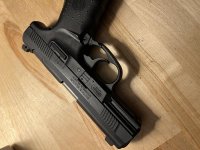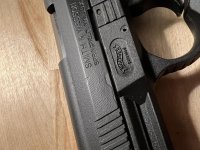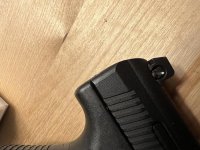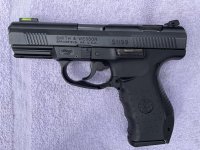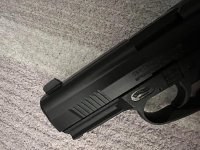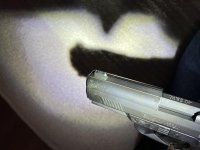From what we were told (I went through the armorer class for the 99's 3 times), S&W sent their slides & barrels out for batch treatment to a vendor for the Melonite QP treatment. Ditto for the earlier M&P pistols.
Yes, we were told that if the Melonite process was done incorrectly, it could result in some oxidation (rust) of the treated parts, even though they were stainless under the nitrided layer. That happened with some early M&P's.
They do their own nitrocarburizing process nowadays, which gives them more QC over it, and call it Armornite, last I looked. I couldn't presume to guess whether they would retreat your SW99 slide & barrel, using their own nitriding process. You'd have to call and ask. They may not even have anyone there who remembers working on the SW99's, or the P99's at the previous Walther America building (when they imported Walthers and did the service/repair work during their import agreement). I was told they even shipped off all of their remaining Walther parts to the then-new Walther Arms company Walther formed in the US.
I have a 2000's vintage SW9940, and a SW999C, made just before they stopped production of the regular 99's and changed over to the 990L's. I carried an issued SW9940 of the same vintage for a few years. Nice guns ... once the magazine issue was identified that was responsible for the intermittent early slide-lock (while rounds remained in the magazine) issue reported by some P99 .40 & SW9940) users.
S&W engineers identified a magazine body design condition using their high speed imaging, and Walther then worked with their magazine vendor revise the magazine body and follower in the .40's.
The original .40 mag & follower is on the right in these pics. The revised mag body is on the left. Note the flattened spot behind the mag catch window. That spot kept the rising rounds from shifting too far leftward, under recoil, to prematurely engage the slide stop lever tab and lock back the mag before the mag was empty. The color change of the follower indicated the revised shape of the follower needed to accommodate the changed mag body design. (In the Walther .40 mags they changed the shade of the blue color they used for their .40 followers.)



